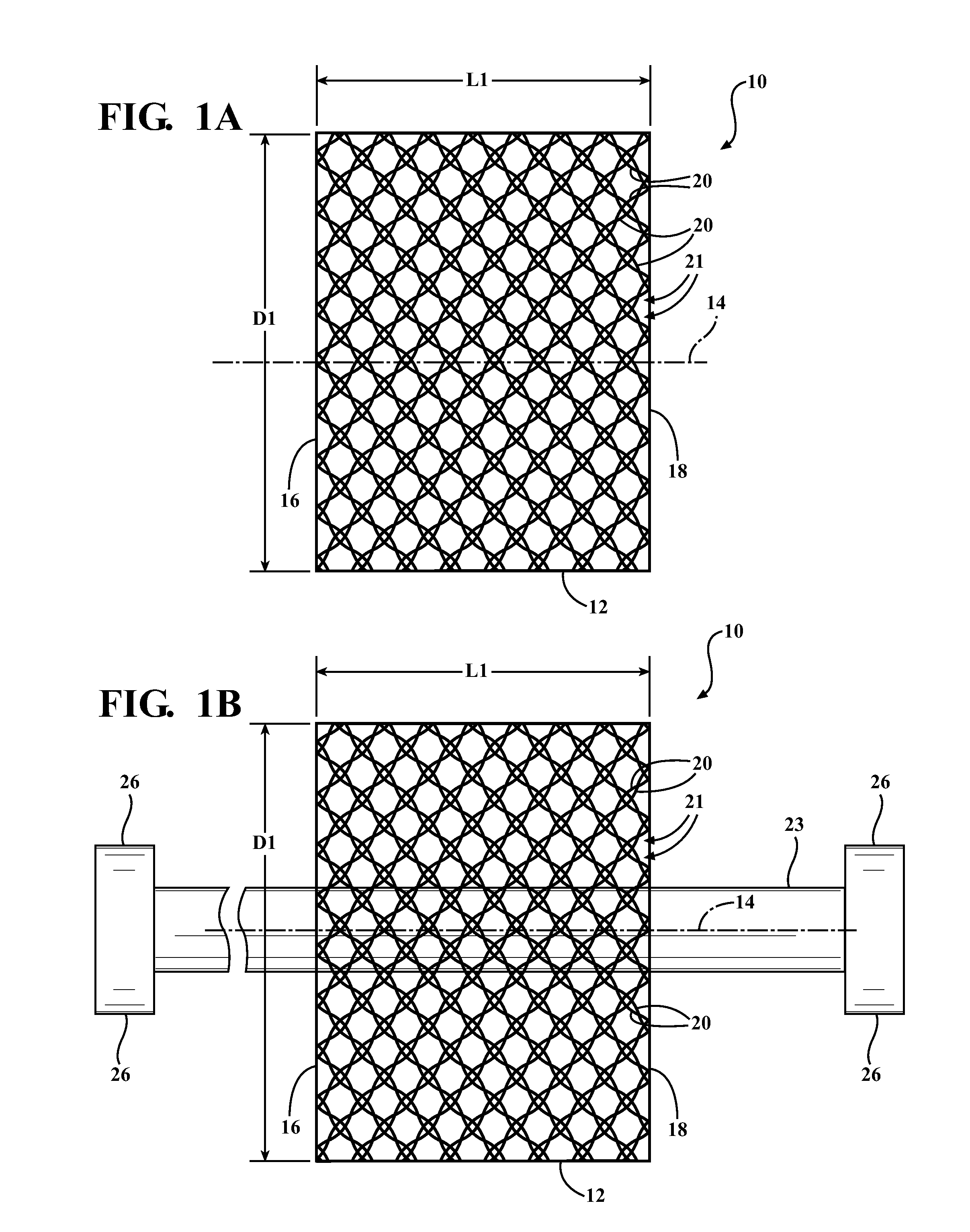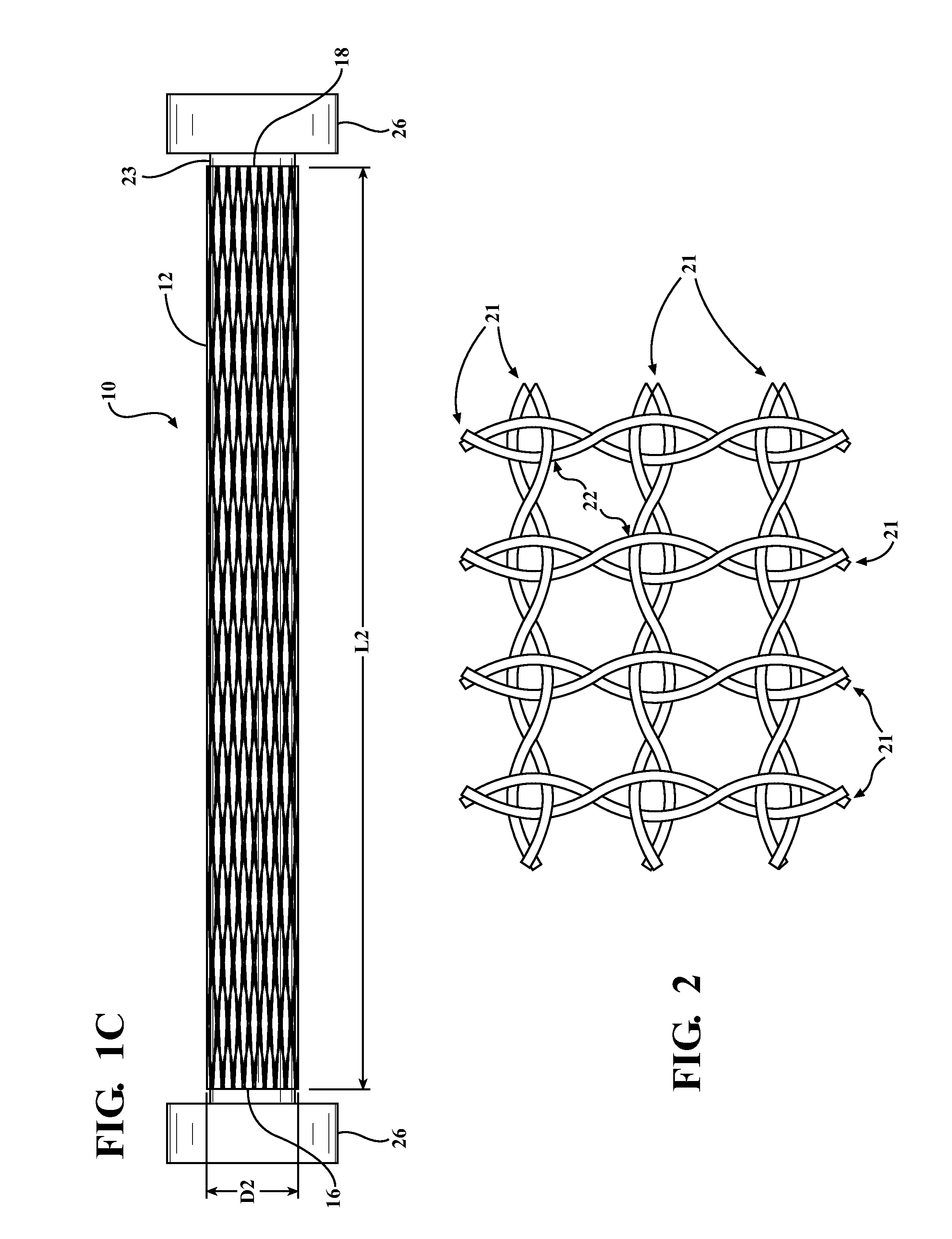Braided textile sleeve with self-sustaining expanded and contracted states and method of construction thereof
a textile sleeve and self-sustaining technology, applied in the field of textile sleeves, can solve the problems of complicated installation of the sleeve over the elongated member, complicated installation of the sleeve, and relatively long length of the sleeve, so as to achieve the effect of increasing diameter, reducing length, and increasing length
- Summary
- Abstract
- Description
- Claims
- Application Information
AI Technical Summary
Benefits of technology
Problems solved by technology
Method used
Image
Examples
Embodiment Construction
[0030]Referring in more detail to the drawings, FIGS. 1A-1C illustrate a braided protective textile sleeve, referred to hereafter as sleeve 10, constructed in accordance with one aspect of the invention. The sleeve 10 has a braided, circumferentially continuous, seamless tubular wall 12 extending lengthwise along a central longitudinal axis 14 between opposite ends 16, 18, wherein one or both of the ends 16, 18 can be formed as an open or closed end, shown as both being open ends 16, 18. The wall 12 is axially compressible to attain a pre-assembled first state, having a decreased length L1 and increased diameter D1 (FIGS. 1A and 1B) and is axially extendible to attain a fully assembled second state, having an increased length L2 and decreased diameter D2 (FIG. 1C). The wall 12 includes heat-settable, braided yarn 20, which upon being heat-set, imparts a bias on the wall 12. The bias imparted by the heat-set yarn 20 causes at least a portion of the wall 12 to remain in a selected one...
PUM
| Property | Measurement | Unit |
|---|---|---|
| Diameter | aaaaa | aaaaa |
| Length | aaaaa | aaaaa |
| Heat | aaaaa | aaaaa |
Abstract
Description
Claims
Application Information
 Login to View More
Login to View More - R&D
- Intellectual Property
- Life Sciences
- Materials
- Tech Scout
- Unparalleled Data Quality
- Higher Quality Content
- 60% Fewer Hallucinations
Browse by: Latest US Patents, China's latest patents, Technical Efficacy Thesaurus, Application Domain, Technology Topic, Popular Technical Reports.
© 2025 PatSnap. All rights reserved.Legal|Privacy policy|Modern Slavery Act Transparency Statement|Sitemap|About US| Contact US: help@patsnap.com



